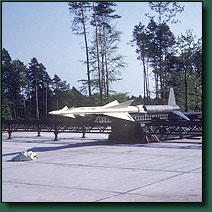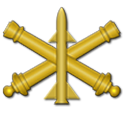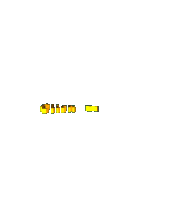

Charlie Battery - Kleingartach
The Launching Area - 1959 - 1969
A Nike Site
 asically, a Nike Guided Missile Site is a very big gun. The Integrated Fire Control Area (IFC) was the sight and trigger, and the Launching Area was the chamber and bullets. The type of missile fired depended on what the target was. A Nike Ajax was strictly an anti-aircraft missile, or a Surface to Air Missile (SAM). The Nike Hercules, which had either nuclear or conventional warhead options, had both a Surface to Air as well as a Surface to Surface capability. So that kind of tactical and strategic range gave 7th Army more options with these weapons. An overview of the layout of an average Nike Site can be viewed by reading the following PDF Article, so “Click Here” to view it.
asically, a Nike Guided Missile Site is a very big gun. The Integrated Fire Control Area (IFC) was the sight and trigger, and the Launching Area was the chamber and bullets. The type of missile fired depended on what the target was. A Nike Ajax was strictly an anti-aircraft missile, or a Surface to Air Missile (SAM). The Nike Hercules, which had either nuclear or conventional warhead options, had both a Surface to Air as well as a Surface to Surface capability. So that kind of tactical and strategic range gave 7th Army more options with these weapons. An overview of the layout of an average Nike Site can be viewed by reading the following PDF Article, so “Click Here” to view it.
On an average work day Charlie Battery's Launching Area always had a lot of activity. It consisted of three launching sections, an Assembly/Maintenance Area, the Launching Control Trailer LCT, The Generator Area, and the Ready Room.
The Launching Sections
Each of the three Launching Sections, Alpha, Bravo, and Charlie, had three launchers, a missile storage hanger, and a crew revetment. Each missile was on a launching rail that had a set of four rollers that moved along a parallel set of tracks that ran along each launcher through the storage hanger and out the back. The tracks moved out the back of the hanger so that missile trailers could pull up along side and up or off load missiles. Images that illustrate that process can be seen on Page 3. So please “Click Here” for those images.
The Section Personnel included a Section Chief, a Sergeant First Class, SFC, Crew Chiefs, a Spec 5, a Section Panel Operator, Spec 4 or PFC, and Launcher Crewman, spec 4 and below. The Section Chief and Panel Operator were housed in the revetment, or protected area and were in the communication loop with the LCT and IFC. Several views of a section panel can be viewed on the following images by “Click Here”.
Missile Preparation
Nike Ajax were always on the launchers, and if a Nike Hercules was ordered by Battalion, then the Ajax could be rolled off the launcher and down the tracks and the “Herc” rolled into its place.
With the correct missiles are on the their launchers, the crewmen would go through a series of checks preparing the them for elevation and firing. There was an intercom between the launching pad and inside the revetment to the section panel operator. With the all the missile preparation concluded, the crew chief reported to the section panel operator that the launchers were ready to be elevated. Then the section panel operator would report: Roger... Stand by to elevate launcher one... Elevating launcher one, and so on.
Once the missiles were elevated a series of checks were run from the IFC. The Missile Tracking Radar (MTR) would lock on to each missile and send it a series of commands that would test guidance system. The commands would be verified by watching the “Yaw and Pitch” fins on the front of each missile. These “Yaw and Pitch” steered the missile and the “trim” elevator on the stabilizer fins were meant to help stabilize the missile while in flight. All of the actions related to these guidance commands were all realized through the use of actuators and oil hydraulics. An excellent view to study both the Ajax and Hercules fin systems can be viewed at two adjacent images, so “Click Here” to fly to the images now.
Crew Revetment
Once the guidance system checks were complete the missile was ready to fire and the crew would then enter the shelter of the revetment. There were two heavy duty, 8 inch thick doors that closed and locked by turning a large wheel that extended heavy locking pins into the the steel reenforced doorway of the front revetment face.
Crew Revetment cont...
 That first door was right at the launching pad, and the second was down the hallway at the entrance to the crew compartment, both with the same door jam construction. This configuration was repeated through the crew compartment, with a hallway out the back to the generator shed. To help understand this section configuration we have provided an illustration of a revetment plan, so please “Click Here” to view that image..
That first door was right at the launching pad, and the second was down the hallway at the entrance to the crew compartment, both with the same door jam construction. This configuration was repeated through the crew compartment, with a hallway out the back to the generator shed. To help understand this section configuration we have provided an illustration of a revetment plan, so please “Click Here” to view that image..
The whole structure was then covered with a heavy layer of soil planted with grass, which helped camouflage as well as preventing soil erosion due the the angle of the slope, although some soil settling is visible. Looking back, with all of the explosive power in both rocket fuels as well as warheads in each section plus how close we were to it all, it's hard to imagine how much real protection the revetments would have actually provided.
That's why there were such high earth embankments that separated Alpha and Bravo Sections from the Assembly Building, the LCT, and Ready Room area. There are many examples of these embankments, so look for them in the following four pages.
Ready To Fire
Now that the missiles were ready all of the action and commands came from the IFC, coordinated with the Launcher Control Trailer and the Sections in the Launching Area. The firing command and action came from the Battery Control Officer, (BCO) in the IFC.
However, every communication point along the way, such as the LCT and Section Panels, had the same firing capability. The switch with the big red cover that had to be flipped up in order to access and actuate that switch. That switch is quite obvious, so “Click Here” and look to the far right bottom row. If any of these points were incapacitated then each section had to ability to fire.
An Average Day
When not on alert, which was 99.9% of the time, we basically maintained our assigned Alpha, Bravo, and Charlie Sections. Everything from keeping outside assets from rusting through painting. Work in the missile hangers included keeping our missiles free from any kind of contamination that would inhibit their flight to the target. The grass around the launchers and revetment had to be kept up with, and the launcher hydraulics had to be maintained. Five gallon cans of popup spout, cherry red hydraulic fluid were common around the section. And there were maintenance checks that I had to do on the section panel in the revetment.
On Duty
If you were “On Duty” that meant you spent the night in the ready room in the launching area. Our ready room, unlike the IFC, was formally built with all of the amenities. We brought our M1 rifles, our sleeping bags, and little extras to make us happy. Chow was brought down to us by truck from the mess hall up at the barracks. At night there was a rotation of guard duty around each one's assigned section perimeter road. 2 hours walking guard with 4 hours off, which got old very quickly, and made for a disjointed nights sleep. However, in the evening and often late into the night, epic games of partners double deck pinochle were played, fortified with Schnitzel runs to Haberschlacht, that were a lot of fun and created close friendships. The weekend duty was relaxed, quiet and low key.
Please Remember: Click the thumbnail images on the following pages to display an even larger image. Then click anywhere outside of the larger image and it will close itself.






